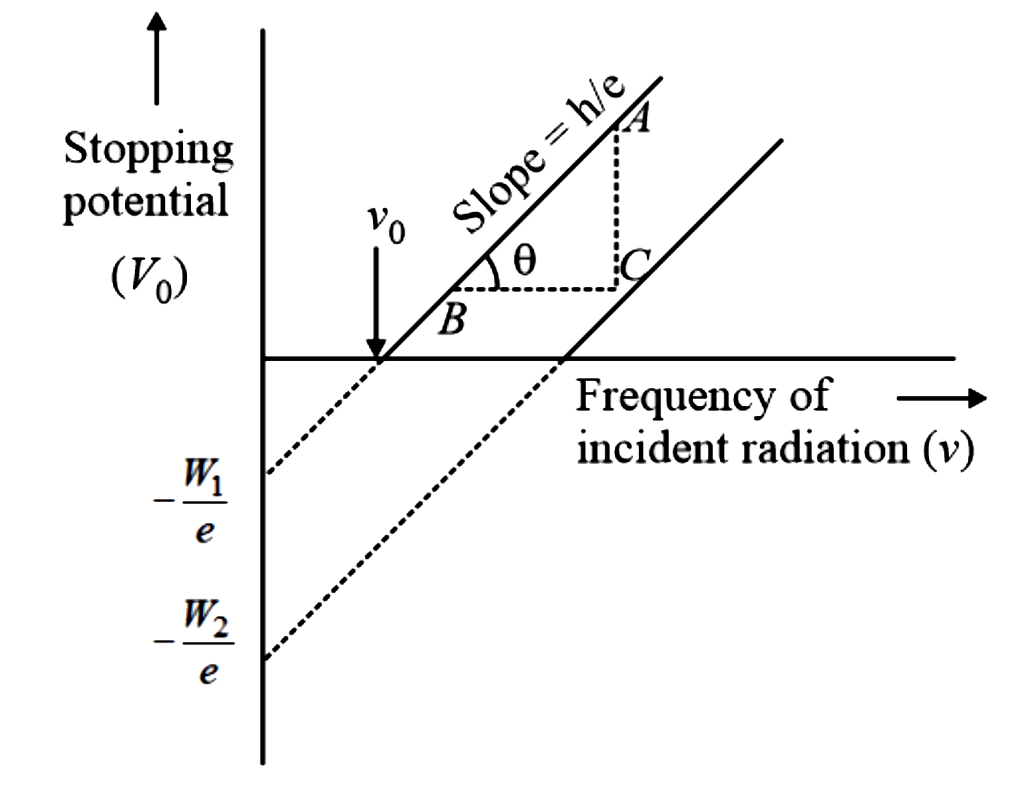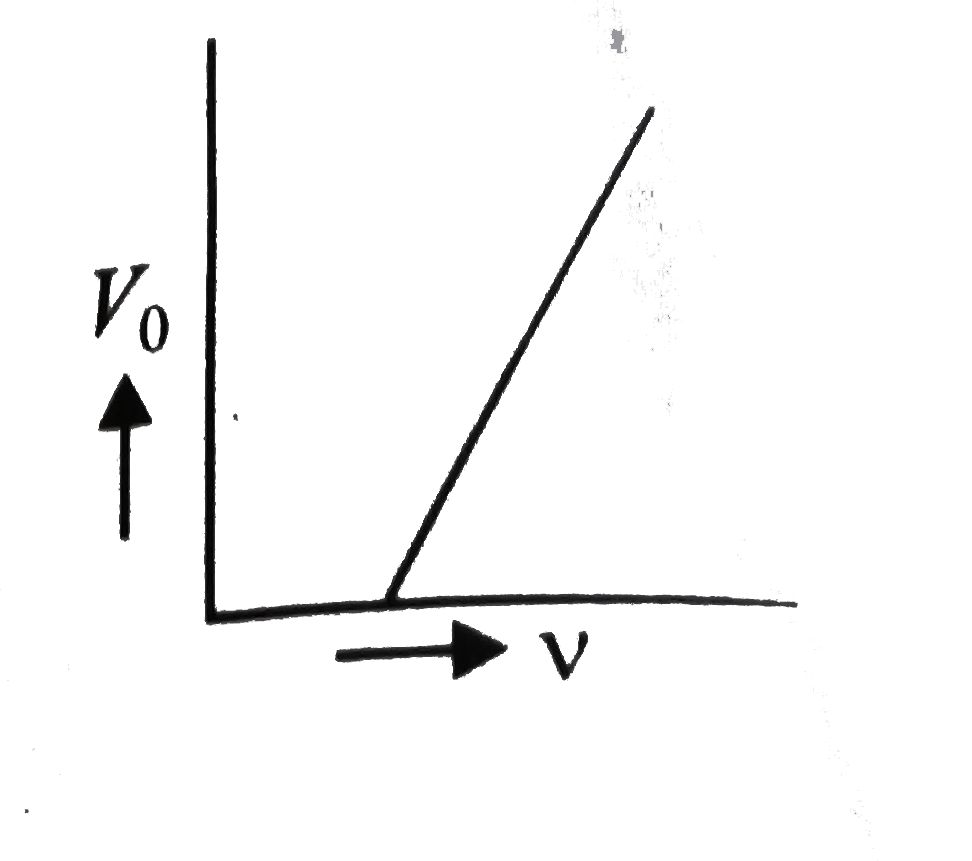In photoelectric effect the slope of straight line graph between stopping potential (Vs) and frequency of incident light (v) gives

10−14
5×10−14
4×10−15
4×10−34
The correct Answer is:C
When light waves of differing frequencies are made inciden on the same surface the stopping potential (Vs) differ as is evidenced from Einstein.s photoelectric equation given by
hv−hv0=eVs
where h is Planck.s constnat v, v0 the frequencies and e the charge

Hence V(s)=hve=hv0e..i
comparing eq (i) with straight line equation
y=mx+c
slope m=he
Where h=6.6×10−34Js,e=1.6
×10−19C
∴m=6.6×10−341.6×10−19=4.125×10−15
Topper's Solved these Questions
Similar Questions
In a photoelectric effect experiment, the graph between the stopping potential (V) and frequency (v) of the incident radiations on two different metal plates P and Q are shown in plates, P and Q has greater value of work function ? (ii) What does the slope of the lines depict?

View SolutionThe correct curve between the stopping potential (V) and intensity of incident light (I) is
View Solution
Knowledge Check
In photoelectric effect the slope of straight line graph between stopping potential (V0) and freqency of incident light (v) gives:
 Acharge on electronBwork function of emitterCPlanck's constantDratio of Planck's constant to charge on electron
Acharge on electronBwork function of emitterCPlanck's constantDratio of Planck's constant to charge on electronThe emission of electrons from a metal surface exposed rto light radaition of appropriate wavelength is called photoelectroic effect .The emmited electron are called photo=-weklectron work function of threshold energy may be defined as the minimum amount of energy required to ejercted electron from a most surface .According to Einstein
Maximum kinetic energy of ejected electron = Aborbed energy - Work function
12mv2max=h(v)−h(vn)=hv[1λ−1λn]
Where vn and λ0 are thereshold frequency and threshold wavelength respectively
Sopping potential : it is the miximum potential at which the photoelectric current becomes zero if V0 is the stopping potential eV0=h(v−v0)
In the photoelectric currect effect the shape of strainght line graph between stopping potential (V0) and frequency of incident light (V) gves
 Acharge on electronBwork function of emitterCplak's constantDratio of plank's constyant to charge on electron
Acharge on electronBwork function of emitterCplak's constantDratio of plank's constyant to charge on electronIn photo electric effect, the slope of the straight line graph between stopping potential and frequency of the incident light gives the ratio of Planck's constant to
Acharge of electronBwork functionCphoto electric currentDK.E. of electron
In photoelectric effect the slope of stop of stopping potential versus frequency of incident light for a given surface will be
View SolutionIn photoelectric effect the slope of stop of stopping potential versus frequency of incident light for a given surface will be
View SolutionIn a photoelectric experiment, the reciprocal of the slope of the straight line graph giving the relation between the stopping potential and the frequency of incident radiation gives
View SolutionIn a photoelectric effect experiment, the slope of the graph between the stopping potential and the incident frequency will be :
View SolutionIn a photoelectric effect experiment, the slope of the graph between the stopping potential and the incident frequency will be :
View Solution
